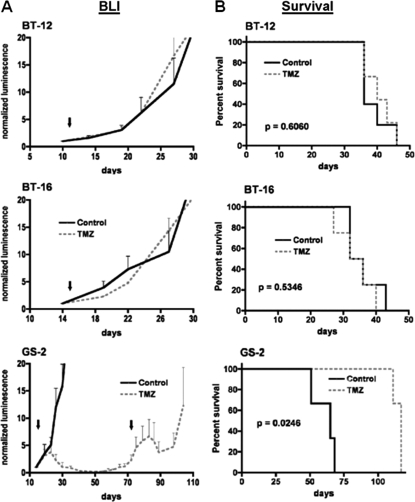Fig. 5.
Bioluminescence (A) and survival (B) analysis of mice receiving intracranial injection of ATRT (BT-12 and BT-16) or GBM (GS-2) cells, and treated with either TMZ or vehicle (control). Bioluminescence monitoring indicates similar growth rates of ATRT orthotopic xenografts following administration of vehicle or of a single 100 mg/kg dose of TMZ (arrows denote day of treatment), whereas mice receiving injection of GBM cells (GS-2) show decreasing luminescence following treatment with TMZ. In fact, GS-2 xenografts show response to a second administration of TMZ at day 71, following indication of tumor re-growth by bioluminescence monitoring. Results from the survival analysis (B) are consistent with the bioluminescence monitoring, showing no survival benefit from TMZ treatment for mice with intracranial ATRT (P = .6060 for BT-12, and P = 0.5346 for BT-16), whereas TMZ treatment significantly extends the survival of mice with intracranial GS-2 (P = .0246)

